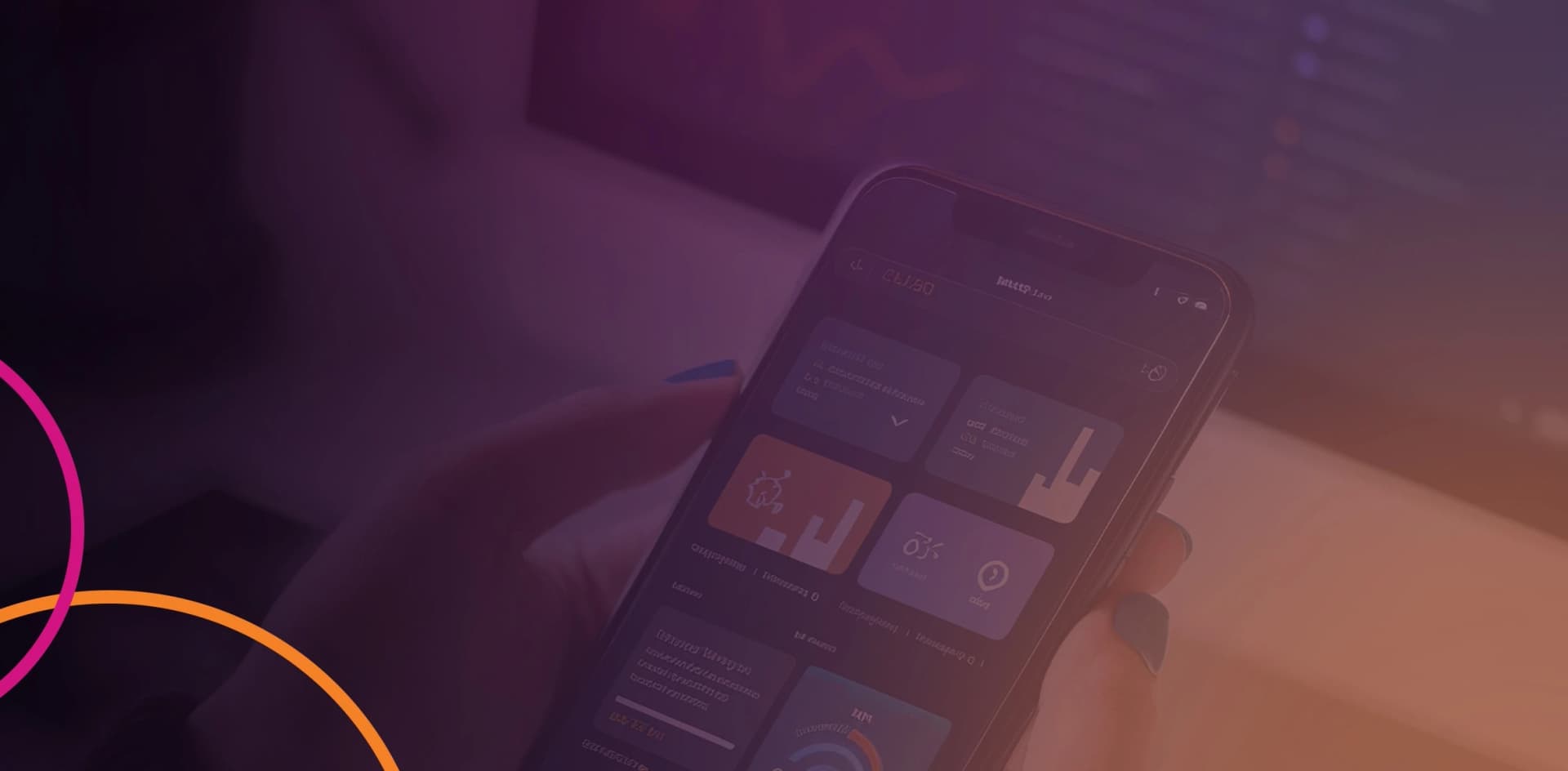
The Essentials of Mobile App Development: Navigating Challenges and Ensuring Success
by Iulian Arabagiu • about 1 year ago • 10 min read
Mobile app development has become a cornerstone of modern business strategy, offering companies the opportunity to reach customers, streamline operations, and provide services at the tap of a screen. Whether you’re a startup or an established enterprise, creating a mobile application is a complex process that requires careful planning, effective communication, and the right mix of skills and tools.
Understanding the Mobile App Development Process
How much does it cost to develop a mobile app in 2024?
The development of a mobile app typically follows a series of steps, each critical to the success of the final product:
Conceptualization and Planning
The process begins with a clear definition of the app's purpose, target audience, and core features. During this phase, stakeholders should collaborate to outline the app's objectives and user experience goals. A well-thought-out plan serves as the blueprint for the development process.
Design and Prototyping
Once the app’s concept is clear, the next step involves designing the user interface (UI) and user experience (UX). This stage includes creating wireframes, mockups, and prototypes that illustrate how the app will look and function. Prototyping allows for early feedback and ensures that the design aligns with the users' needs.
Development
The actual coding of the app takes place during this phase. Development is often divided into two parallel tracks: front-end and back-end. The front-end focuses on the user interface and interaction, while the back-end handles server-side logic, databases, and integration with third-party services. Development teams typically follow Agile methodologies, which allow for iterative progress and regular updates.
Testing and Quality Assurance (QA)
Rigorous testing is essential to identify and fix bugs before the app is released. This phase includes functionality testing, usability testing, performance testing, and security testing. QA ensures that the app meets the required standards and delivers a seamless user experience.
Deployment and Launch
After testing, the app is ready for deployment. This involves submitting the app to the relevant app stores (e.g., Apple App Store, Google Play Store) and ensuring that it meets all the platform-specific requirements. Post-launch, the app may require updates and bug fixes based on user feedback.
Maintenance and Updates
The development process doesn't end with the launch. Ongoing maintenance is crucial to address bugs, add new features, and ensure compatibility with the latest operating system updates. Regular updates help keep the app relevant and improve user retention.
How to pick a mobile app development agency
The Role of Agile Methodology in Mobile App Development
Agile methodology has become the standard approach in mobile app development, particularly for projects that require flexibility and iterative progress. Agile allows development teams to break down the project into manageable sprints, each focused on delivering a functional piece of the app. This approach enables teams to adapt to changing requirements and incorporate feedback more effectively.
However, Agile development also presents challenges, particularly in projects where scope and requirements are not well-defined from the outset. Without clear guidance and consistent communication, Agile projects can become chaotic, leading to delays and increased costs.
Common Challenges in Mobile App Development

While the steps outlined above provide a roadmap for mobile app development, the process is fraught with challenges. These challenges can derail a project if not properly managed:
Unclear Requirements
One of the most common issues in mobile app development is the lack of clear and detailed requirements. When the project scope is vague, developers may struggle to understand the client's vision, leading to misaligned expectations and potential rework.
What is a mobile app developer?
Changing Scope
In Agile projects, changes in scope are expected. However, frequent and poorly managed scope changes can lead to "scope creep," where the project expands beyond its original boundaries. This can result in delays, budget overruns, and a final product that is more complex than necessary.
Resource Constraints
Limited budgets and tight timelines are common in mobile app development, especially for startups. Resource constraints can lead to shortcuts in development and testing, increasing the risk of bugs and performance issues in the final product.
Communication Gaps
Effective communication between developers, designers, and stakeholders is crucial to the success of a mobile app project. Miscommunication can lead to misunderstandings, errors in implementation, and frustration on all sides.
Technology Selection
Choosing the right technology stack is critical for the app's performance, scalability, and security. However, with so many options available, selecting the best tools and platforms can be challenging, especially for clients who may not have technical expertise.
Testing and QA Challenges
Thorough testing is essential to ensure the app works as intended across different devices and operating systems. However, testing can be time-consuming and resource-intensive, particularly when dealing with complex apps or limited testing environments.
Lessons from Sensidev’s Experience with PickRide: A Case Study

The importance of clear communication and proper role allocation in mobile app development is exemplified in Sensidev’s experience with PickRide, a startup that approached us to build an MVP for a ride-sharing app. This case study highlights several key lessons that are applicable to any mobile app project.
PickRide, working with a limited budget, opted for a team augmentation model, hiring only four part-time developers while omitting essential roles such as Product Owner and QA. The lack of a dedicated Product Owner meant that the project’s scope was frequently changed by the client, who also acted as the Project Manager. Features were introduced on the fly, often without considering the implications on the overall project timeline and complexity.
The absence of a QA team further compounded the challenges. Testing was conducted only in the development environment, leading to undetected bugs making their way into production. As frustrations mounted due to delays and additional costs, the client began to suspect that the developers were intentionally causing delays, which harmed the trust between the client and our team.
Ultimately, the project was completed, but not without significant stress and dissatisfaction on both sides. This experience underscored the importance of having a complete and well-defined team, maintaining clear and consistent communication, and managing client expectations from the outset. It also highlighted that while team augmentation can work well for established companies with clear roles and processes, it may not be the best approach for startups with limited budgets and less defined project scopes.
How do companies use artificial intelligence in 2024?
Strategies for Successful Mobile App Development
To navigate the challenges of mobile app development and ensure a successful outcome, it’s important to adopt strategies that address common pitfalls:
- Comprehensive Planning: Invest time in thorough planning at the beginning of the project. This includes defining the app’s core features, target audience, and business goals. Detailed planning helps prevent scope creep and ensures that all stakeholders are aligned on the project’s objectives.
- Clear Role Definitions: Ensure that all necessary roles, such as Product Owner, QA, and Project Manager, are filled. Each team member should have a clear understanding of their responsibilities and how they contribute to the project’s success.
- Effective Communication: Establish regular communication channels and protocols. Use project management tools like JIRA, Trello, or Notion to keep everyone on the same page. Regular meetings and updates help to address issues early and keep the project on track.
- Client Education: Educate the client about the mobile app development process, including the importance of thorough testing, the challenges of scope changes, and the need for clear requirements. An informed client is more likely to make decisions that align with the project’s success.
- Prioritization of Features: Work with the client to prioritize features based on their impact on the app’s success. This helps ensure that the most important functionalities are developed first, allowing for a more focused and efficient development process.
- Thorough Testing Beyond Development Environments: Test the app across multiple environments, devices, and operating systems. This reduces the risk of bugs and performance issues that could negatively impact user experience after launch.
- Agile, But Structured: While Agile methodology allows for flexibility, it’s important to maintain structure and discipline. Define clear milestones and deliverables, and manage scope changes carefully to avoid derailing the project.
The Path to Successful Mobile App Development

Mobile app development is a challenging but rewarding process that requires a blend of technical expertise, careful planning, and effective communication. By understanding the common pitfalls and adopting strategies to address them, developers and stakeholders can navigate the complexities of app development and deliver products that meet or exceed expectations.
The experience with PickRide serves as a reminder of the importance of proper role allocation, clear communication, and realistic expectations. Whether you’re working with a startup or an established company, these principles are essential to the success of any mobile app development project.
As mobile technology continues to evolve, the demand for innovative and high-quality apps will only increase. By mastering the art and science of mobile app development, companies like Sensidev can help clients turn their ideas into successful digital products that drive business growth and enhance user engagement.
Ready to elevate your digital presence with cutting-edge solutions? Choose Sensidev for expertise that delivers results!
Contact us today at https://sensidev.net/ to discover how we can transform your vision into reality! Let’s innovate together!
Connect with us:
Visit us at: Mareşal Alexandru Averescu Str. no. 9, Timișoara, Romania
Mobile App Development Trends

The Importance of UX/UI in Modern Web and Mobile Development
by Lucian Corduneanu • about 1 year ago• 10 min read

Why Mobile App Development is Essential for Business Growth in 2024
by Lucian Corduneanu • about 1 year ago• 10 min read
